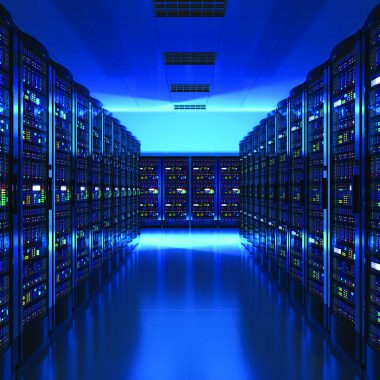I-HWA CHENG/AFP via Getty Images
After months of seeing Intel’s shares tumble, Gelsinger on Monday addressed the elephant in the room by announcing the “next phase of Intel’s transformation.”
“There has been no shortage of rumors and speculation about the company, including last week’s board of directors meeting, so I’m writing today to provide some updates and outline what comes next,” Gelsinger wrote in a letter to employees.
One of the headline updates he shared was that Intel is expanding its collaboration with Amazon Web Services through a “multi-year, multibillion-dollar framework” that would see the two companies work together on custom chip designs.
Specifically, Intel Foundry, the division responsible for manufacturing chips instead of designing them, would produce the chip through a new process called Intel 18A that the company has been preparing to roll out in 2025.
For Patrick Moorhead, founder and chief analyst at advisory firm Moor Insights & Strategy, the development is a step in the right direction. Moorhead wrote on X that the Amazon news “can only be looked at as a positive,” as it gives Intel “a strategic deal it didn’t have before.”
Meanwhile, Alvin Nguyen, senior analyst at Forrester, told Business Insider that this is a big public win for Intel. “Producing chips for a hyperscaler utilising their top processes provides publicity, a revenue stream, and validation of their foundry business,” he said.
Gelsinger’s second headline announcement was that the company is establishing Intel Foundry as a separate subsidiary within Intel, with its own new operating board and independent directors. It’s a move that aims to bring about a key financial benefit.
“Importantly, it also gives us future flexibility to evaluate independent sources of funding and optimize the capital structure of each business to maximize growth and shareholder value creation,” he said.
The final headline announcement was that the company was set to “pause” on projects to build new plants in Poland and Germany for around two years in a bid to become more capital-efficient.
Critically, Gelsinger told employees that “there are no changes” to Intel’s other manufacturing locations as it remains committed to manufacturing investments across locations in the US, such as Arizona, Oregon, New Mexico, and Ohio.
For now, investors seem to have taken the shake-up positively. Intel’s share price was up over 6% in pre-market trading on Tuesday.
Forrester’s Nguyen said the announcements go “a long way to improving their outlook.”.
However, he added that challenges remain, “especially with their workforce reduction and concerns about the AI market.”
One of the company’s biggest problems has been its struggle to capitalize on the generative AI boom. According to a Reuters report last month, the company passed over an opportunity to invest in ChatGPT maker OpenAI seven years ago. That set it well behind rivals once large language models finally arrived in a big way just a few years later.
Analysts have also noted positive aspects of Gelsinger’s turnaround plan. A research note from Bernstein, published on Tuesday, said, “the moves suggest Intel is not as desperate for cash as some have feared.”
However, the research firm’s note added that “nothing announced was really incremental, or changes the current situation.”
Perhaps Gelsinger isn’t being paranoid enough.
https://www.businessinsider.com/intel-ceo-pat-gelsinger-turnaround-plan-aws-2024-9


